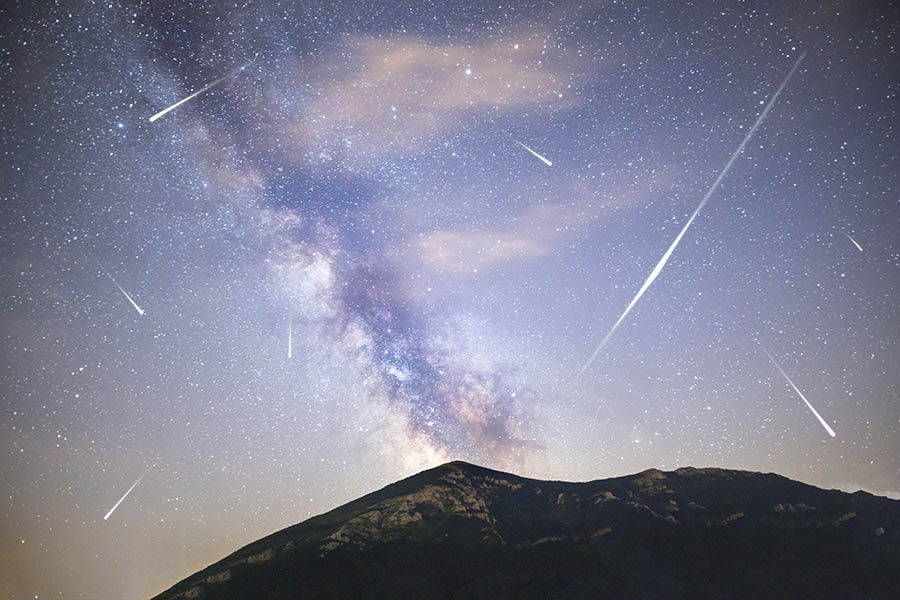10 Meteor Shower Facts | Which is the most impressive?
Meteor showers can be one of the best spectacles of the year, and if you haven’t seen one before, then you’re missing out. Though meteors are often seen on their own too – and then sometimes referred to as shooting stars – when grouped together and arriving at Earth in close succession, we refer to them as a shower.
There are many different meteor showers that repeat throughout the year, so it’s definitely worth your time to try and see one. Let’s look at some facts about meteor showers.
- When a meteoroid enters into the Earth’s atmosphere, they begin to burn up – this is when we call them a meteor.
- The majority of meteor showers are caused by Earth moving through the remaining debris from disintegrated comets.
- A meteor is simply part of a meteoroid (a comet or asteroid) that has broken off from the meteoroid during it’s orbit around the Sun.
- More intense meteor showers are known as meteor storms. These storms can produce more than 1,000 meteors per hour.
- When a meteor makes it all the way to the Earth intact, we call the remains a meteorite.
- The name for a very bright meteor is a fireball, also referred to as a bolide.
- We only have one known recording of a meteor hitting a person, all the way back in 1954.
- Meteor showers have been noticed for thousands of years – the earliest writings we have recording them dates back more than 2000 years to the Chinese.
- We name meteor showers based on the constellation which they appear in. For example, Pi Puppids is located in the Puppis constellation.
- There are approximately 30 different meteor showers that occur at the same time each year.
There are many different meteor showers that occur throughout the year. One of the most well known meteor showers is Perseids, which has a high rate of producing meteors and is usually one of the brighter ones. Perseid meteor shower occurs around August time during the summer.

Another great meteor shower that you should try to see is Geminids, which occurs in December. Geminids is known for being the only large meteor shower that isn’t caused by a disintegrated comet; it’s instead caused by a Palladian asteroid.
 Leonid meteor shower.
Leonid meteor shower.
You may also hear of the Leonid meteor shower. The Leonids are most apparent through the month of November, peaking around the middle of the month.
Many meteor showers occur at the same time each year. This is because the Earth orbits around the Sun yearly, and each year at the same point it intersects with a specific comet, causing another meteor shower. However, not all meteor showers happen at the same time every year, and Earth can intersect with a comet randomly if it isn’t in the full orbit of the Sun.
There are many different meteor showers throughout the year, and it will depend on your location. Check out this meteor shower calendar to find out when the next meteor shower will be in your area.
Meteor showers can come in all different types of colors and vibrancies. This really depends on what the meteor itself is made of. For example, if it has a high composition of sodium, it will be yellow. However, if it has a high composition of calcium, then it will appear in a more purple/violet color.
This really depends at the intensity of the meteor shower. Some meteor showers may produce as few at 10 meteors per hour. However, more active showers, like Perseids, can produce more than 100 meteors per hour. So, it really depends on the shower.
It can be quite difficult to know whether you’ve seen a stray meteor on it’s own – often, they can be gone before you know it, as they’re a quick flash of brightness in the sky. However, you would definitely know if you’ve seen a meteor shower, because they’re many meteors one after the other!
All in all, a meteor shower is a must see for both adults and children. You may only see a stray meteor, but if you want to see a full meteor shower, then you can easily research and find one coming up soon. Then you can see with your own eyes just how impressive a meteor shower is!